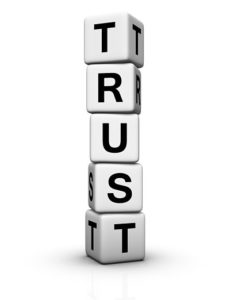The Like Element
April 4, 2018
 We’ve talked several times about the concept that no one buys anything until they know, like and trust the company who is doing the selling. If you aren’t on their radar screen, they can’t possibly know you exist. So marketing’s first job is to identify the right audience and put us in front of them on a consistent basis until we get noticed.
We’ve talked several times about the concept that no one buys anything until they know, like and trust the company who is doing the selling. If you aren’t on their radar screen, they can’t possibly know you exist. So marketing’s first job is to identify the right audience and put us in front of them on a consistent basis until we get noticed.
Of course, getting noticed isn’t enough. Once you have their attention, you need to do something remarkable, given how many people are trying to earn their attention. You have to be relevant. And not just once — but on a regular basis. You have to matter to them long before they understand that you can help them solve a problem or achieve a goal.
This week, I want to focus on that middle phase – the like element. Our likeability is completely within our control and yet, I don’t think most businesses or marketing/sales people consciously think about how they can earn that reaction from someone. We also probably don’t give enough thought to how we taint or damage that reaction without meaning to do so.
How do we increase our likeability?
Walk a mile in their shoes: The more you can demonstrate that you understand their struggles, worries, hopes, fears, and desires – the more you can connect with them. This, by the way, does not mean asking them the irritating questions that feel canned and insincere like, “what keeps you up at night?” It’s about truly understanding it because, as best as you can, you’ve put yourself in their place.
Actually be selfless: There’s nothing more annoying than someone pretending to care or help when really what they’re trying to do is figure out a way to get to your wallet. You need to help and serve because it’s the right thing to do, not because it will benefit you financially. Many of the people you help will never spend a dime with you. But some of them will. Enough of them will to make it worth your efforts and along the way; you’ll earn the reputation of being an organization that genuinely cares about the people it encounters.
Let it get personal: You know that sales technique where they teach you to notice pictures or mementos in someone’s office and then try to connect based on those? “Hey, you like golf too?” I am definitely not talking about that. I’m talking about letting people get to know you by sharing the other elements of your life. That might be connecting with business colleagues on Facebook or weaving some personal elements into your blog posts. But being personal is all about being human.
You’re always on stage: That said, be mindful of how you present yourself because who you are does matter. There are some topics that are polarizing by nature. I’m not saying you shouldn’t post about it on your social accounts, support them with your dollars or have a strong opinion. But recognize the cost of that choice.
Don’t shy away from your mistakes: Whether you have a business that is reviewed online or just had an unhappy client express themselves in public – it’s an opportunity to show that you take good care of your customers and are willing to admit when you’ve made a mistake. Owning and fixing that mistake in public is actually one of the best ways to boost your likeability. Perfection isn’t believable. They know you’re human and are going to mess up. They just want to know you’re going to do something about it when you do.
While this all seems like common sense, you and I both know plenty of examples of businesses that definitely do not live by these principles. Why not earn your prospect’s business for the long haul by being genuinely likable?
More








